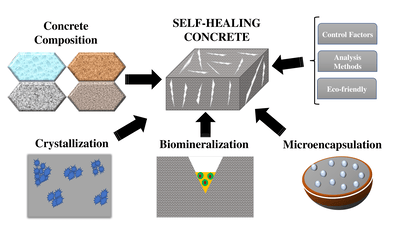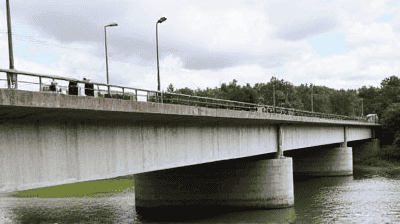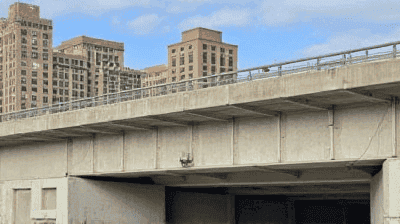
The global construction industry is at a crossroads. With increasing urbanization, aging infrastructure, and the urgent need for sustainable practices, the demand for innovative building materials is more pressing than ever. Among the advancements that promise to revolutionize construction, self-healing concrete stands out as a groundbreaking development.
Self-healing concrete is a type of concrete that has the ability to automatically repair cracks that develop in its structure over time. The self-healing mechanism is typically achieved through the incorporation of specific materials, particularly bacteria, that react to the presence of water and nutrients to facilitate the healing process. This innovative material aims to extend the lifespan of concrete, reduce maintenance costs, and enhance the overall durability of infrastructure.
The self-healing process in concrete largely relies on bio-based mechanisms, especially when utilizing bacteria. The most common bacteria used in self-healing concrete are from the genus Bacillus. These bacteria are spore-forming, which means they can survive in dormant states for extended periods. By embedding these spores within the concrete mix, it is possible to create a material capable of self-repair.
When a crack forms in the concrete and water enters, the bacteria awaken from their dormant state. Once activated, the bacteria metabolize the calcium lactate or other nutrient compounds present in the concrete. This metabolic process produces calcium carbonate, which precipitates and fills the cracks, restoring the integrity of the material.
Self-healing concrete can employ various mechanisms, primarily classified into two categories:
Biological Self-Healing: This mechanism relies on bacterial spores spread throughout the concrete. As described earlier, when the spores are activated by water, they begin to metabolize nutrients and produce a binding material that repairs cracks.
Autogenous Healing: This type of self-healing occurs when the concrete is engineered to include materials that can react with water. For example, certain types of cement can chemically react with water to form new solid phases that effectively fill cracks as they develop.

The incorporation of self-healing properties into concrete comes with numerous advantages:
Self-healing concrete significantly enhances the durability of structures by addressing minor damage before it can escalate. By autonomously repairing cracks, this type of concrete can effectively extend the lifespan of infrastructure, reducing the frequency of necessary repairs.
Incorporating self-healing concrete can lead to substantial cost savings over the lifetime of a structure. Reduced maintenance and repair needs translate into fewer expenditures on labor and materials. Additionally, the extended lifespan of infrastructure means that projects will not require replacement as frequently, further conserving financial resources.
Self-healing concrete promotes sustainability within the construction industry. By extending the lifespan of structures, we can reduce the need for new materials and limit waste generated from demolishing and replacing deteriorating infrastructure. Furthermore, the materials used in self-healing concrete may have lower environmental impacts compared to conventional options.
Cracks in concrete structures can compromise safety, leading to potential hazards such as structural failure. Self-healing concrete reduces the risk of deterioration-related accidents by minimizing the likelihood of significant damage leading to catastrophic events.
The ability to heal cracks also contributes to the aesthetic appeal of concrete surfaces. The appearance of cracks can detract from the visual quality of a structure, whereas self-healing concrete helps maintain a smooth and uniform finish.
Self-healing concrete is versatile and can be applied across various sectors of construction and civil engineering. Some notable applications include:
Highways, bridges, tunnels, and other critical infrastructure components often experience wear and tear due to environmental factors and heavy usage. Self-healing concrete can be used in the construction and repair of these structures, increasing their durability and reducing maintenance costs over the long term.
Incorporating self-healing concrete into residential and commercial buildings helps mitigate damage caused by natural settling or environmental factors. This application allows for greater peace of mind for property owners and reduces the need for costly repairs.
Dams, reservoirs, and water treatment facilities are susceptible to cracking due to pressure and environmental factors. Self-healing concrete can help maintain the integrity of these structures while reducing the risks of leaks and ensuring efficient water containment.
The transportation sector, including roads and railways, can benefit from self-healing concrete in terms of enhancing the durability and lifespan of surfaces subjected to constant traffic and stress. This technology supports the development of safer and more resilient transportation networks.
Self-healing concrete can also be creatively used in artistic and architectural applications. Sculptors and architects can leverage the unique properties of this material to create aesthetically appealing designs that retain their integrity over time.

Despite the promising benefits and applications of self-healing concrete, several challenges and considerations must be addressed:
Self-healing concrete is still an emerging technology that requires further research to optimize its properties and develop standardized formulations. Scientists are continuously working on improving the efficiency of the bacteria used and ensuring their compatibility with various concrete mixes.
While self-healing concrete can lead to long-term cost savings, the initial investment for research, development, and production may be higher than traditional materials. Ensuring that the benefits outweigh the costs will be crucial for widespread adoption in the construction industry.
Many stakeholders in the construction and engineering sectors may be unaware of self-healing concrete's potential benefits. Increasing awareness and education around this technology is essential for driving its adoption and integration into the market.
As with any new material, self-healing concrete must pass regulatory standards to be approved for widespread use. Collaborative efforts between researchers, manufacturers, and regulatory bodies will be necessary to ensure compliance and safety.
While self-healing concrete shows promise in laboratory settings, understanding its long-term performance in real-world environments is critical. Monitoring the efficacy of self-healing processes over time will help inform future enhancements and applications.
Several projects around the world are exploring the use of self-healing concrete, showcasing its potential impact on infrastructure:
In an innovative project in the Netherlands, researchers integrated bacteria into precast concrete elements for bridges and tunnels. The results demonstrated that specified spore-forming bacteria effectively healed cracks, showcasing substantial improvements in durability over traditional concrete.
The University of Michigan has conducted extensive research on self-healing concrete through its Civil and Environmental Engineering Department. Their studies indicate that incorporating bacteria can improve crack healing performance significantly, paving the way for future applications in commercial construction.
In the UK, a collaborative research project focused on incorporating self-healing technologies into concrete pavements. This initiative demonstrated that self-healing mechanisms could effectively restore functional properties in pavement sections, thus prolonging their life and reducing maintenance costs.
China has invested heavily in self-healing concrete research, with trials being conducted on highways and urban infrastructures. Initial results show promising longevity and durability, leading to discussions about potential large-scale adoption.
Several sustainable city projects globally are incorporating self-healing concrete into their designs. These projects highlight the importance of resilient infrastructure in the face of climate change while showcasing innovative solutions for urban development.

As the construction industry continues to evolve, the future of self-healing concrete looks promising:
With advancements in research and development, as well as growing awareness of sustainability within the construction industry, self-healing concrete is likely to see wider adoption. More manufacturers may begin to integrate self-healing technologies into their products as demand increases.
Scientists are likely to investigate and develop new formulations for self-healing concrete that improve the efficiency of healing mechanisms, increase durability, and expand the range of applications.
The integration of self-healing concrete with smart technologies is an exciting prospect. Smart sensors could be embedded within concrete structures to provide real-time monitoring of stress levels, crack development, and self-healing performance.
The challenges facing the adoption of self-healing concrete require collaborative efforts across research institutions, construction companies, and regulatory bodies. Global partnerships could drive further innovations and standardized practices.
As the construction industry prioritizes sustainability, self-healing concrete can contribute significantly to achieving the United Nations Sustainable Development Goals, particularly in areas related to sustainable infrastructure, climate resilience, and responsible consumption.
Self-healing concrete represents a remarkable advancement in materials science and engineering, offering innovative solutions to age-old challenges in the construction industry. By harnessing the power of bacteria to autonomously repair cracks, this technology has the potential to significantly extend the lifespan of infrastructure, reduce maintenance costs, and contribute to a more sustainable future.
As the demand for resilient and environmentally friendly building materials continues to grow, the widespread adoption of self-healing concrete could mark a transformative shift in how we design, construct, and maintain our built environment. The convergence of biological science, engineering, and sustainability positions self-healing concrete as a key player in the future of infrastructure development, ensuring that our cities remain safe, durable, and environmentally responsible.